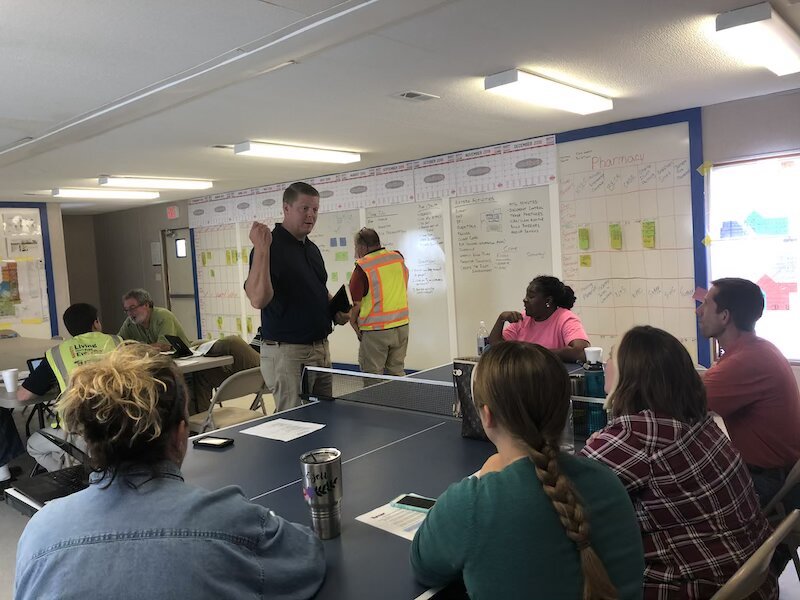Talk to contractors in just about any town in the country, and the topic of labor shortages inevitably comes up. Many contractors see the problem as being chronic with no end in sight, at least while the economy remains strong. But there are companies that are trying to do something about it, with an eye toward cultivating the next generation of plumbers, electricians, carpenters, and other construction laborers.
Earlier this month Lowe’s Cos., the giant home-improvement retailer, teamed with more than 60 partners to introduce Generation T, an effort to shift negative or indifferent perceptions about the trades among students and their parents by demonstrating mobility and career opportunities that skilled trades offer.
Lowe’s and SkillsUSA hosted the first-ever Generation T Bunk Build at Rose Bowl Stadium in Pasadena, Calif. This regional community service project provided 300 students enrolled in SkillsUSA’s carpentry program the chance to work with skilled carpenters to build 100 bunk beds for the nonprofit Sleep in Heavenly Place.
Last summer, Turner Construction’s Nashville office, in partnership with the Rutherford County (Tenn.) Chamber of Commerce, conducted a Teacher Externship Program, an immersive two-week course that gives local middle-school teachers exposure to the ins and outs of the construction industry, so they can share their experiences with their students.
This is the second year this program has been offered. The first year draw five teachers, and the second 20 participants, according to Paul Lawson, Project Executive of Turner Nashville.
Lawson—who chairs the Chamber’s Rutherford Works Construction Council and is a member of its Executive Workforce Council—says that the Teacher Externship Program is part of a larger effort by the Chamber and county to expand the market’s labor force.
The two-week program gave the teachers an inside look at how a construction company works. They spent time at Turner’s office with estimators and area managers. The teachers also went into the field at one of Turner’s local active job sites: a $48 million, 95,623-sf expansion of the St. Thomas Rutherford Hospital in Murfreesboro, Tenn., which is scheduled for completion next April. (Gresham Smith is the architect and engineer on this project.)
Lawson says the teachers “shadowed” project managers, two engineers, two supervisors, and the project’s safety manager.
Turner Nashville intends to offer this program next summer, and Lawson would like to expand the course beyond two weeks, “which is pretty quick” for giving teachers with no previous construction knowledge or hands-on understanding about what’s involved in building a building.
The program, he says, “has helped to open their eyes to what construction really is, and to dispel misconceptions about construction work,” says Lawson. “A teacher can have an impact on, what, 60 students a year.”
For teacher David Duez, the program was a revelation that he shared with his eighth-grade Career Explorations class through a series of lessons. “The kids are very interested in it,” he says. “They are young, but it doesn’t hurt to throw as much as we can at them, and if something sticks, great.”
Related Stories
| Jan 15, 2014
6 social media skills every leader needs
The social media revolution—which is less than a decade old—has created a dilemma for senior executives. While its potential seems immense, the inherent risks create uncertainty and unease.
| Jan 15, 2014
Report: 32 U.S. buildings have been verified as net-zero energy performers
The New Buildings Institute's 2014 Getting to Zero Status report includes an interactive map detailing the net-zero energy buildings that have been verified by NBI.
| Jan 13, 2014
AEC professionals weigh in on school security
An exclusive survey reveals that Building Teams are doing their part to make the nation’s schools safer in the aftermath of the Sandy Hook tragedy.
| Jan 13, 2014
6 legislative actions to ignite the construction economy
The American Institute of Architects announced its “punch list” for Congress that, if completed, will ignite the construction economy by spurring much needed improvements in energy efficiency, infrastructure, and resiliency, and create jobs for small business.
| Jan 12, 2014
The ‘fuzz factor’ in engineering: when continuous improvement is neither
The biggest threat to human life in a building isn’t the potential of natural disasters, but the threat of human error. I believe it’s a reality that increases in probability every time a code or standard change is proposed.
| Jan 12, 2014
5 ways virtual modeling can improve facilities management
Improved space management, streamlined maintenance, and economical retrofits are among the ways building owners and facility managers can benefit from building information modeling.
| Jan 10, 2014
What the states should do to prevent more school shootings
To tell the truth, I didn’t want to write about the terrible events of December 14, 2012, when 20 children and six adults were gunned down at Sandy Hook Elementary School in Newtown, Conn. I figured other media would provide ample coverage, and anything we did would look cheap or inappropriate. But two things turned me around.
| Jan 10, 2014
Special Report: K-12 school security in the wake of Sandy Hook
BD+C's exclusive five-part report on K-12 school security offers proven design advice, technology recommendations, and thoughtful commentary on how Building Teams can help school districts prevent, or at least mitigate, a Sandy Hook on their turf.
| Jan 10, 2014
Resiliency, material health among top AEC focuses for 2014: Perkins+Will survey
Architectural giant Perkins+Will recently surveyed its staff of 1,500 design pros to forcast hot trends in the AEC field for 2014. The resulting Design + Insights Survey reflects a global perspective.
| Jan 9, 2014
How security in schools applies to other building types
Many of the principles and concepts described in our Special Report on K-12 security also apply to other building types and markets.

















